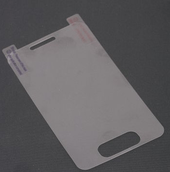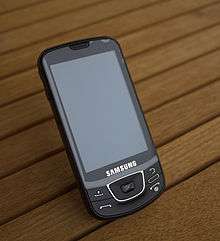Screen protector
A screen protector is an additional sheet of material—commonly polyurethane or laminated glass—that can be attached to the screen of an electronic device and protect it against physical damage.


History
The first screen protector was designed and patented by Herbert Schlegel in 1968 for use on television screens.[1]
Screen protectors first entered the mobile-device market after the rise of personal digital assistants (PDAs). Since PDAs were often operated via a stylus, the tip of the stylus could scratch the sensitive LCD screen surface. Therefore, screen protectors provided sacrificial protection from this damage. Since then, the ubiquity of mobile-devices have seen the screen protector become more widely used.
Materials
Screen protectors are made of either plastics, such as polyethylene terephthalate (PET) or thermoplastic polyurethane (TPU), or of laminated tempered glass, similar to the device’s original screen they are meant to protect. Plastic screen protectors cost less than glass and are thinner (around 0.1 mm (0.004 in) thick, compared to 0.3 to 0.5 mm (0.012 to 0.020 in) for glass)[2] and more flexible. At the same price, glass will resist scratches better than plastic, and feel more like the device's screen, though higher priced plastic protectors may be better than the cheapest tempered glass models, since glass will shatter or crack with sufficient impact force.[2]
Disadvantages
Screen protectors have been known to interfere with the operation of some touchscreens.[3] Also, an existing oleophobic coating of a touchscreen will be covered. When the screen protector is removed, the oleophobic coating will be damaged or removed entirely sometimes.
On some devices, the thickness of screen protectors can affect the look and feel of the device.
References
- U.S. Patent 3,418,426
- Patkar, Mihir (July 28, 2014), "Are Glass Screen Protectors Better Than Plastic Ones?", Lifehacker
- Brown, Silas S. "Windows Mobile 6.1 Setup Notes". Retrieved 2014-12-05.